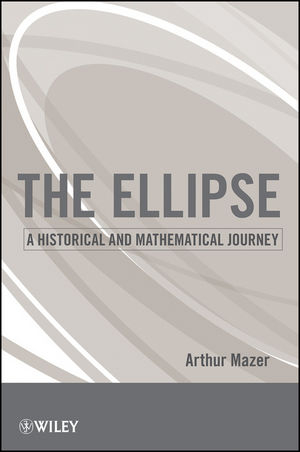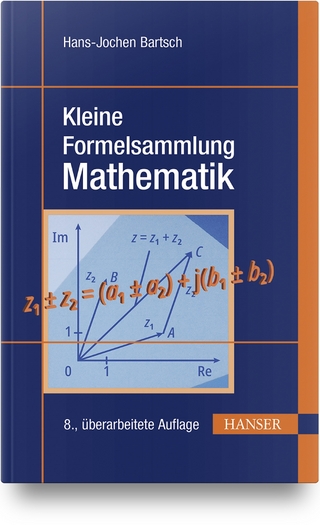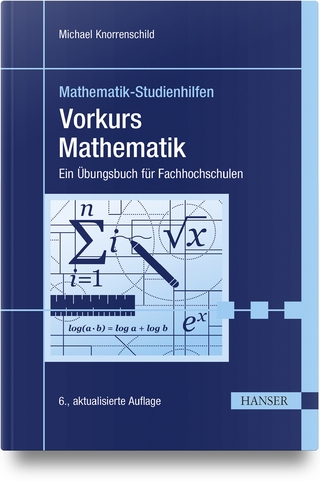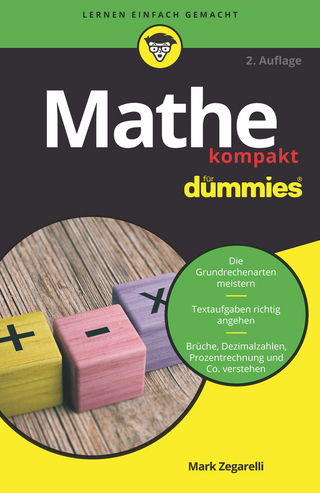
The Ellipse
John Wiley & Sons Inc (Verlag)
978-0-470-58718-8 (ISBN)
Explores the development of the ellipse and presents mathematical concepts within a rich, historical context The Ellipse features a unique, narrative approach when presenting the development of this mathematical fixture, revealing its parallels to mankind's advancement from the Counter-Reformation to the Enlightenment. Incorporating illuminating historical background and examples, the author brings together basic concepts from geometry, algebra, trigonometry, and calculus to uncover the ellipse as the shape of a planet's orbit around the sun.
The book begins with a discussion that tells the story of man's pursuit of the ellipse, from Aristarchus to Newton's successful unveiling nearly two millenniums later. The narrative draws insightful similarities between mathematical developments and the advancement of the Greeks, Romans, Medieval Europe, and Renaissance Europe. The author begins each chapter by setting the historical backdrop that is pertinent to the mathematical material that is discussed, equipping readers with the knowledge to fully grasp the presented examples and derive the ellipse as the planetary pathway. All topics are presented in both historical and mathematical contexts, and additional mathematical excursions are clearly marked so that readers have a guidepost for the materials' relevance to the development of the ellipse.
The Ellipse is an excellent book for courses on the history of mathematics at the undergraduate level. It is also a fascinating reference for mathematicians, engineers, or anyone with a general interest in historical mathematics.
Arthur Mazer, PhD, is Manager of Quantitative Analytics at Southern California Edison, where he oversees the risk assessment of the company's power and gas portfolio. Throughout his career, he has held various academic positions as well as analyst positions at Electrabel, Process Energy, and Energy Power Marketing Company. Dr. Mazer is the author of Electric Power Planning for Regulated and Deregulated Markets, also published by Wiley.
PREFACE. CHAPTER 1: INTRODUCTION.
CHAPTER 2: THE TRAIL: STARTING OUT.
2.1 A Sticky Matter.
2.2 Numbers.
2.2.1 Integers, Rational Numbers, and Irrational Numbers.
2.2.2 The Size of the Irrational Numbers.
2.2.3 Suitability of Rationals and the Decimal System.
2.2.4 Rational and Irrational Outcomes.
CHAPTER 3: THE SPACE: GEOMETRY.
3.1 Euclidean Space, Dimension and Rescaling.
3.1.1 Euclidean Space and Objects.
3.1.2 Euclidean Space in Higher Dimensions.
3.1.3 Unit Measurements and Measures of Objects.
3.1.4 Rescaling, Measurement, and Dimension.
3.1.5 Koch's Snowflake, a Fractal Object.
3.2 Measurements of Various Objects.
3.2.1 Pythagorean Theorem, Length of the Hypotenuse.
3.2.2 Cavalieri's Theorem in Two Dimensions.
3.2.3 Cavalieri's Theorem, Archimedes Weighs In.
3.2.4 Simple Applications of Cavalieri’s Theorem.
3.2.5 The Circle.
3.2.6 Surface Area of the Cone.
3.2.7 Cavalieri's Theorem a Stronger Version in Three Dimensions.
3.2.8 Generalized Pyramids.
3.2.9 The Sphere as a Generalized Pyramid.
3.2.10 The Surface Area and Volume of the Sphere.
3.2.11 Equal-Area Maps, Another Excursion.
CHAPTER 4: THE LANGUAGE: ALGEBRA.
4.1 Cartesian Coordinates and Translation of the Axes.
4.1.1 Intersections of Geometric Objects as Solutions to Equations.
4.1.2 Translation of Axis and Object.
4.2 Polynomials.
4.2.1 Lines.
4.2.2 Parabolas and the Quadratic Equation.
4.3 Circles.
4.3.1 Equations for a Circle.
4.3.2 Archimedes and the Value of π.
4.3.3 Tangent Lines to a Circle.
4.4 The Four-Dimensional Sphere.
4.4.1 Pythagorean Theorem in Higher Dimensions.
4.4.2 Measurements in Higher Dimensions and n-Dimensional Cubes.
4.4.3 Cavalieri's Theorem.
4.4.4 Pyramids.
4.4.5 The n-Dimensional Sphere as an n-Dimensional Pyramid
4.4.6 The Three-Dimensional Volume of the Four-Dimensional Sphere's Surface
4.5 Finite Series and Induction.
4.5.1 A Simple Sum.
4.5.2 Induction.
4.5.3 Using Induction as a Solution Method.
4.6 Linear Algebra in Two Dimensions.
4.6.1 Vectors.
4.6.2 The Span of Vectors.
4.6.3 Linear Transformations of the Plane Onto Itself.
4.6.4 The Inverse of a Linear Transformation.
4.6.5 The Determinant.
4.7 The Ellipse.
4.7.1 The Ellipse as a Linear Transformation of a Circle.
4.7.2 The Equation of an Ellipse.
4.7.3 An Excursion into the Foci of an Ellipse.
CHAPTER 5: THE UNIVERSAL TOOL: TRIGONOMETRY.
5.1 Trigonometric Functions.
5.1.1 Basic Definitions.
5.1.2 Triangles.
5.1.3 Examples.
5.2 Graphs of the Sine, Cosine, and Tangent Functions.
5.3 Rotations.
5.4 Identities.
5.4.1 Pythagorean Identity.
5.4.2 Negative of an Angle.
5.4.3 Tan(θ) in Terms of Sin(θ) and Cos(θ).
5.4.4 Sines and Cosines of Sums of Angles.
5.4.5 Difference Formulas.
5.4.6 Double-Angle Formulas.
5.4.7 Half-Angle Formulas.
5.5 Lucky 72.
5.6 Ptolemy and Aristarchus.
5.6.1 Construction of Ptolemy's Table.
5.6.2 Remake of Aristarchus.
5.7 Drawing a Pentagon.
5.8 Polar Coordinates.
5.9 The Determinant.
CHAPTER 6: THE SLAYER: CALCULUS.
6.1 Studies of Motion and the Fundamental Theorem of Calculus.
6.1.1 Constant Velocity and Two Problems of Motion.
6.1.2 Differential Calculus, Generalizing the First Problem.
6.1.3 Integral Calculus, Generalizing the Second Problem.
6.1.4 Relations Between Differentiation and Integration and the Fundamental Theorem of Calculus.
6.1.5 Integration, Leibniz’ Notation, and the Fundamental Theorem of Calculus.
6.2 More Motion: Going in Circles.
6.3 More Differential Calculus.
6.3.1 Differentiation Rules.
6.3.2 Notation and the Derivative at a Specified Point.
6.3.3 Higher Order Differentiation and Examples.
6.3.4 Differentiation and the Enquirer.
6.4 More Integral Calculus.
6.4.1 The Antiderivative and the Fundamental Theorem of Calculus.
6.4.2 Methods of Integration.
6.5 Potpourri.
6.5.1 Cavalieri's Theorem and the Fundamental Theorem of Calculus.
6.5.2 Volume of the Sphere and Other Objects with Known Cross-Sectional Areas.
CHAPTER 7: EIGHT MINUTES THAT CHANGED HISTORY.
7.1 Newton's Laws of Motion.
7.2 Galilean Checkpoint.
7.3 Constants of Motion and Energy.
7.3.1 Energy of a Tossed Object.
7.3.2 Energy of a System Moving in a Single Dimension.
7.4 Kepler and Newton: Aristarchus Redeemed.
7.4.1 Polar Coordinates.
7.4.2 Angular Momentum.
7.4.3 The Ellipse.
EPILOGUE.
BIBLIOGRAPHY.
INDEX.
| Zusatzinfo | Photos: 2 B&W, 0 Color; Drawings: 62 B&W, 0 Color; Graphs: 67 B&W, 0 Color |
|---|---|
| Verlagsort | New York |
| Sprache | englisch |
| Maße | 156 x 234 mm |
| Gewicht | 472 g |
| Themenwelt | Mathematik / Informatik ► Mathematik ► Allgemeines / Lexika |
| Mathematik / Informatik ► Mathematik ► Geometrie / Topologie | |
| ISBN-10 | 0-470-58718-0 / 0470587180 |
| ISBN-13 | 978-0-470-58718-8 / 9780470587188 |
| Zustand | Neuware |
| Haben Sie eine Frage zum Produkt? |
aus dem Bereich


